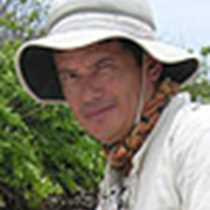Genovesa Island
Located at the northern hemisphere quite distant from any of the central islands, Genovesa is one of the most beautiful and unique islands thanks to its great amount of seabirds. Its isolation is likely the reason this island doesn’t have any land reptiles or Galápagos hawks.
Our first outing began with a landing on a white beach at Darwin Bay; noisy birds fluttered around the cliffs gave this place a special kind of atmosphere. There were frigate birds chasing red-footed boobies and tropic birds and along the beach hungry chicks were fed by their parents, all of them interacting among themselves while from a short distance away our guests enjoyed the incredible tameness of those creatures.
Walking along the white coralline beach we arrived at the red mangroves which were full of red-footed boobies perching on their branches. On the rocks nearby yellow crowned night herons dried off their wings in a diamond posture. On the ground, finches fed on cactus seeds, Nazca boobies nested and fed their chicks and a group of swallow-tailed gulls slept after a long night fishing for rare creatures far from the shore.
After walking, we headed to the cliffs to snorkel; the weather conditions were excellent and our guests observed many species of tropical fish such as Moorish Idols, hog fish, trigger fish and colorful invertebrates along the vertical walls.
In the afternoon we headed to “El Barranco” or “Prince Philip’s Steps” and its lava fields that have been occupied by Palo Santo and muyuyo trees which are a nesting territory for frigate birds and more boobies. As we walk through more open areas we find ourselves surrounded by a great many fissures and crevices, which are the territory of thousands of storm petrels that are casing the sky like bats. It is incredible to see how much activity there is in a place that at the first sight looked barren. As the petrels come here to roost, their predator, the short-eared owl, quietly waits for them in the open fields, looking for the perfect time to attack. We observed many of them; although certainly it was very difficult to discover them because of their perfect camouflage with feathers blended perfectly with the brown rocks.
After sunset we observed the last lights of the day with a vision of Marchena Island at the distance. We reflected on all the incredible creatures and the great week aboard National Geographic Islander where we made new friends.




